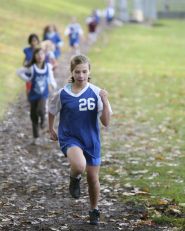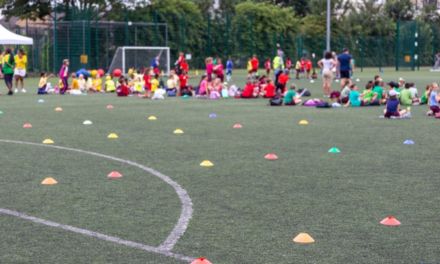Cross country is a sport that is all about fitness and stamina, two elements which can have a positive impact on a child’s cognitive function outside of PE (Mokgothu, 2007).
Sport should be accessible to all, regardless of background or physical ability. Teachers and coaches, whether in a classroom or outside on the school field, are the ones who can inspire anyone to thrive in a given subject. Within the curriculum, PE is about increasing participation and incorporating a competitive element to develop physical literacy. The best way to inspire involvement in PE lessons is through making the sessions fun, enjoyable and accessible.
A way in which this can achieved while teaching cross country is through relay cross country or breaking down the different elements of the sport. Cross country is a great inclusive sport as it is adaptable to meet the demands of the group and the location of the course.
With the nature of cross country and the physical demands it places on the participants, it is important that every session is planned and certain factors such as previous exposure to the sport and enjoyment levels of the students are taken into account.
Adapting lesson to ability
Cross country is a sport which can divide a school group instantly; those who enjoy the sport and have a high level of ability contrasted those who do not enjoy continual running as they just don’t see the benefit of it.
When the words cross country are mentioned by the PE teacher, negative connotations may be voiced by members of the group, with phrases such as “do we have to?”, “I hate running!”, “can’t we do football instead?”, from those with an aversion to running. Similarly, during the session students with greater ability may get bored waiting for the others to catch up and reach the finish line. The result can be problematic for the teacher of the session when faced with complaints from all involved.
To avoid this situation, a widely used and effective technique is to stagger the starting times of the different ability members of the session. Allowing the children with a slower cross country time to set off at different times will encourage all of the participants and remove the problem previously mentioned.
This strategy works to avoid a wide range of finishing times and to try to make sure the high ability children don’t catch the lower abilities in the group until the end of the course; to the benefit of all involved. It will give the quicker participants “targets” to reach; it will also act as a motivation for the lower ability members of the group.
What the sessions will achieve
What are the objectives you are setting out for both individual sessions and the module? Are you looking to improve pace or encourage health? Is it to improve participation in extra-curricular cross country? Is it to demonstrate the benefits of the sport, both cognitively and physically?
While in between sessions, reflection is crucial to allow the lessons to be as effective as possible for the students and for the teacher/coach to continue their individual professional development. This is vital in any subject, and within PE lessons, the best laid plans and sessions may work with the students who enjoy the sport, however may deter students from the lower ability group. This would therefore go against the government’s plan for PE for all lessons to be fun, informative and encourage lifelong participation.
By planning sessions that are inclusive and cater for all abilities, lessons will be enjoyable for the students and the teacher alike. In turn, this can lead to the students enjoying the sport and wanting to take up cross country after school and when they leave at post-16. This should be the aim for most PE teachers when covering any specific sport across the curriculum.
Differentiation in this sport can be from encouraging the weaker athletes to try their best and achieve personal goals, likewise for the stronger performers a longer target depending on their ability. An example of this could be setting a performer who runs national standard trying to challenge the school record; on the other hand, a victory of the weaker athletes could be taking off 10 seconds from last week’s time or simply running the whole course without walking.
Teaching subjects such as PE, and cross country in particular, can use the school’s behaviour and merit system to the teacher’s advantage. This can be to encourage a personal best time, or to try to have a theoretical understanding of the process the body goes through during cross country and similar events.
A student who maybe isn’t as gifted at long distance running as Mo Farah, may be good at understanding the difference between type 1 and type 2B muscle fibres or how the sliding filament theory aids and enables performance.










